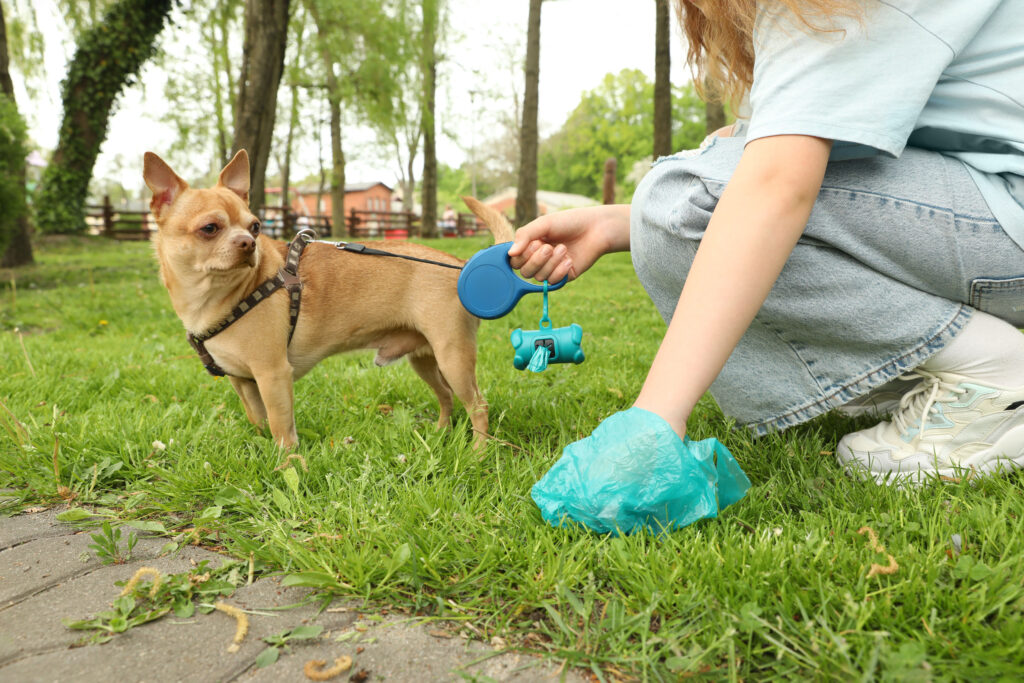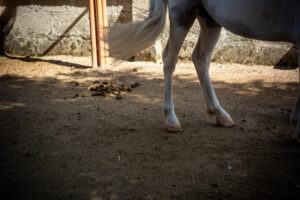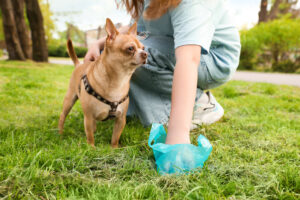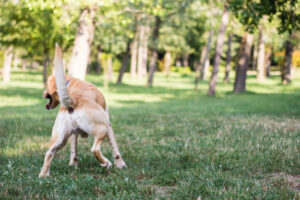Last spring, my neighbor’s toddler ended up in the ER with something called toxocariasis. Never heard of it? Neither had I, until the doctor explained it came from parasites in dog poop. The kid had been playing in their backyard where their two labs did their business. One handful of contaminated dirt, one absent-minded finger in the mouth, and boom—three weeks of medications and a $4,000 hospital bill.
That was my wake-up call. Living in Colorado Springs with two dogs and three kids, I’d been treating the backyard like it would magically clean itself. Turns out, our high altitude and dry climate don’t make dog waste disappear—they preserve it like some kind of parasitic time capsule.
The Diseases Nobody Talks About

Picking Up Dog’s Waste Is Our Job!
Dr. Mitchell at Peak Vista explained it to me straight: “Dog feces can harbor over 20 different parasites and diseases transmissible to humans.” She rattled off names that sounded like a medical school exam—giardia, salmonella, campylobacter, E. coli.
“But my dogs are healthy,” I protested.
“Doesn’t matter,” she said. “They can carry parasites without showing symptoms. Your healthy dog could be shedding millions of roundworm eggs daily.”
Here’s the terrifying part: those eggs can survive in Colorado soil for years. Years. Our dry climate and cool temperatures actually help preserve them. That pile your dog left last October? Still infectious.
Why Colorado Springs Is Different
Living at 6,000 feet changes the game. We don’t get the humid heat that breaks down waste faster at sea level. Instead, our dry air mummifies it. Walk through any park after snowmelt and you’ll see last winter’s deposits perfectly preserved.
“The freeze-thaw cycle doesn’t kill parasites like people think,” Tom from Springs Canine Waste Removal told me. “It just preserves them until conditions are right for infection.”
Plus, our active outdoor lifestyle puts us at higher risk. How many times have your kids played in the backyard, then come in for snacks without washing hands? How often do you garden where your dog goes? That’s exposure risk every single time.
The Kid Connection
Children are parasite magnets. They play in dirt, put everything in their mouths, and have developing immune systems. My friend Sarah learned this when her five-year-old developed mysterious stomach issues that lasted months.
“The gastroenterologist finally asked about pets,” she told me. “We mentioned our golden retriever, and he immediately ordered parasite testing.”
Bingo. Hookworms. The kid had been playing in the sandbox that the dog occasionally used as a bathroom. Microscopic larvae penetrated his skin while he built sandcastles.
The treatment was rough—anti-parasitic medications that made him sick, dietary restrictions, follow-up testing. “If I’d known dog poop was basically toxic waste, I’d have been way more careful,” Sarah said.
It’s Not Just the Fresh Stuff
Here’s what blew my mind: fresh dog poop is actually less dangerous than old poop. Roundworm eggs need 2-4 weeks in soil to become infectious. So that pile you’ve been meaning to clean up? It’s getting more hazardous every day.
My across-the-street neighbor thought rain would wash it away. Nope. Rain disperses the parasites, spreading contamination over a larger area. His entire side yard tested positive for giardia after a summer of “natural decomposition.”
The worst part? You can’t see contamination. That patch of grass looks fine, but microscopic eggs and cysts persist long after visible waste disappears. Your kids are literally playing in an invisible minefield.
The Water Contamination Issue
Colorado Springs sits on multiple watersheds. Dog waste near storm drains washes directly into our water system. After heavy rains, Fountain Creek shows elevated E. coli levels—much of it from pet waste.
“People think it’s just fertilizer,” said Mark from the city’s stormwater department. “But dog waste has 2-3 times the bacteria of human waste. It’s not fertilizer—it’s pollution.”
My running route goes along Monument Creek. Can’t tell you how many people I see letting their dogs go right next to the water. That contamination flows downstream, affecting everyone’s water quality. We’re literally poisoning our own water supply one dog walk at a time.
The Real Cost of Lazy
I used to be a “once a week” cleaner. Sometimes less in winter when snow covered everything.
Then I calculated the real cost of my laziness:
- Neighbor’s kid’s medical bills: $4,000+
- Treating my lawn for parasites: $300
- New sandbox after contamination: $150
- Peace of mind: Priceless
Now multiply that by every dog owner in Colorado Springs. We’re talking millions in preventable healthcare costs and environmental damage because we can’t be bothered to pick up poop.
Solutions That Actually Work
After my wake-up call, I tried everything. Here’s what actually works in Colorado Springs:
Daily pickup is non-negotiable. I know, I know. But parasites need time to develop. Fresh removal breaks the infection cycle. Get a good rake-style scooper—works better on our dry ground than clamshell types.
Consider professional service in winter. Frozen ground makes DIY removal brutal. Services like Tom’s charge $10-15 per week. Worth it to avoid spring’s biohazard reveal.
Designate a dog area. We sectioned off part of our yard with gravel. Easy to clean, kids know to avoid it. Not the prettiest solution, but better than contaminating the whole yard.
Enzyme treatments help. After removal, we spray bacterial enzyme solution that breaks down residual waste. Won’t kill parasites but reduces overall contamination.
Training Your Family
The hardest part was changing everyone’s habits. New house rules:
- Shoes off at the door (tracking in contamination is real)
- Hands washed after any yard time
- No eating outside without handwashing first
- Dog zones are no-go zones for kids
My teenagers rolled their eyes. “You’re being paranoid,” they said. Then I showed them microscope photos of hookworm larvae. Amazing how fast they started following rules after that.
The Community Problem
Your yard might be pristine, but what about the park? The trail? That neighbor who never cleans up? We’re only as safe as our least responsible community member.
I’ve become that guy who carries extra bags and offers them to bagless dog walkers. Confrontational? Maybe. But after seeing what parasites do to kids, I’ll risk being the poop police.
Some HOAs in Colorado Springs now fine residents for not cleaning up. Mine charges $50 per violation. “We had three kids get giardia from the common area,” the board president explained. “Now we have zero tolerance.”
The Bottom Line
Dog waste isn’t just gross—it’s a legitimate health hazard. In Colorado Springs’ dry climate, we can’t count on nature to clean up after us. Those parasites persist, waiting for your kid, your garden vegetables, or your water supply.
The solution is stupidly simple: pick it up immediately, every time. Yes, it’s annoying. Yes, it’s gross. But compared to watching your kid suffer from preventable parasites? It’s nothing.
Last week, I saw my neighbor’s toddler playing in their now-pristine backyard. Healthy, happy, parasite-free. His dad was out there with a scooper, doing the daily pickup.
“Never thought I’d be this obsessed with dog poop,” he called over.
“Better than being obsessed with hospital bills,” I replied.
He laughed, but we both knew it wasn’t really funny. One moment of laziness, one contaminated handful of dirt, one sick kid—that’s all it takes to learn this lesson the hard way.
Don’t wait for your wake-up call. Your family’s health is worth more than the two minutes it takes to clean up after your dog. In Colorado Springs, those two minutes might be the most important part of your day.



